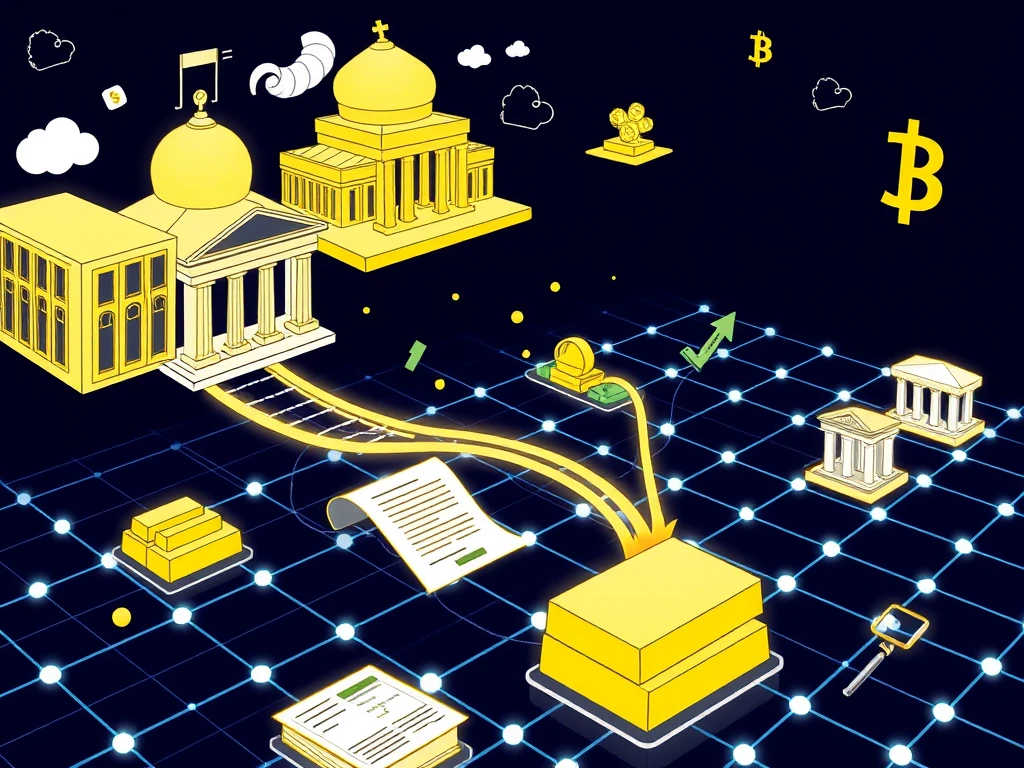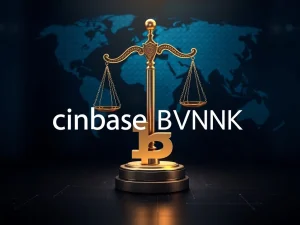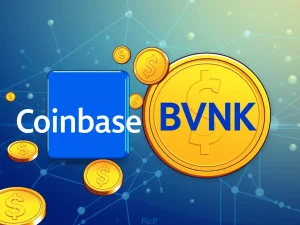Massive RWA Tokenization: BlackRock Leads Institutional Breakthrough

Are you ready for a seismic shift in finance? RWA tokenization, the process of putting real-world assets onto a blockchain, is no longer just a theoretical concept discussed in whitepapers. It’s happening now, driven by major institutional players making significant moves. If you’re interested in how the worlds of traditional finance and crypto are converging, pay attention – this is the moment many have been anticipating.
What’s Driving the RWA Tokenization Boom?
The recent surge in RWA tokenization isn’t random; several factors are aligning to create this perfect storm for adoption. Experts point to a combination of clearer regulations, maturing technology, and macroeconomic pressures.
- Regulatory Clarity: Rules surrounding digital assets are becoming more defined in key markets, providing institutions with the confidence needed to explore and invest in tokenization initiatives.
- Technological Advancements: Blockchain technology is more robust, faster, and capable of handling large-scale operations than ever before. Wallet technology has also improved, making interaction easier.
- Macroeconomic Pressures: Institutions are seeking greater efficiency and liquidity, especially in markets that have traditionally been illiquid. Tokenization offers a path to unlock value and improve settlement processes.
The shifting regulatory landscape, particularly in the United States, is also playing a role. Recent changes, including a softer stance from some regulatory bodies and a more favorable political narrative towards crypto, are encouraging firms to engage with the sector more openly.
Institutional Crypto: Major Players Make Their Move
This past week alone provided compelling evidence that institutional crypto adoption, specifically in the realm of tokenization, is accelerating. We saw announcements that underscore the shift from discussion to execution:
- BlackRock’s DLT Fund: On April 30, BlackRock, the world’s largest asset manager, filed to create a digital ledger technology (DLT) shares class for its $150 billion Treasury Trust fund. This move leverages blockchain to maintain a mirror record of share ownership, demonstrating confidence in the technology for core financial operations.
- Libre’s Telegram Debt Tokenization: Libre announced plans to tokenize $500 million in Telegram debt via a new fund, making it available to accredited investors and usable as collateral onchain.
- MultiBank Group’s $3 Billion Deal: The largest headline came from Dubai, where MultiBank Group signed a massive $3 billion RWA tokenization deal involving real estate assets. This collaboration highlights the potential scale of tokenization for diverse asset classes.
These aren’t isolated incidents. Firms like Citi are exploring digital asset custody, and Franklin Templeton already has tokenized money market funds operating on public blockchains. This shows that major financial institutions are actively testing and deploying blockchain solutions for real-world assets.
Where Are Real-World Assets Being Tokenized?
While dedicated RWA platforms are emerging, Ethereum currently serves as the primary hub for real-world assets tokenization. Its established ecosystem, large developer community, and robust infrastructure make it a preferred choice for many large-scale issuances.
Data confirms this dominance, particularly in the tokenization of US Treasurys, which currently represents a significant portion of the RWA market. Ethereum hosts the majority of this value. However, the landscape is evolving, with new networks specifically designed for compliant asset tokenization offering alternative solutions.
Interestingly, companies like BlackRock are demonstrating that it’s possible to build large-scale tokenized products that can potentially utilize multiple blockchains simultaneously. This suggests that the focus isn’t solely on one chain but rather on the functional requirements of the system, sometimes leading firms to opt for permissioned or private DLT systems.
What Challenges Remain for RWA Tokenization?
Despite the momentum, challenges persist. Regulatory uncertainty, though improving, remains a hurdle, particularly for risk-averse institutions needing absolute clarity on compliance and privacy. Technical interoperability between different blockchain platforms is another area requiring development.
However, hybrid models combining the privacy of permissioned systems with the potential for future connection to public chains are gaining traction as a way to navigate some of these technical complexities.
Looking Ahead: The Potential Scale of Real-World Assets on Blockchain
Projections for the future of RWA tokenization are ambitious. While estimates vary, many experts believe a significant percentage of global financial assets could be tokenized by the end of the decade. Some predict 5-10%, while others are more bullish, estimating up to 30% of the global financial system could be tokenized by 2030.
The market size predictions are equally impressive, ranging from $4 trillion to potentially $50 trillion by 2030. Even achieving the median estimates would represent exponential growth from the current market size (including stablecoins), underscoring the immense potential for real-world assets on blockchain to reshape finance.
In Conclusion
The confluence of clearer regulations, technological maturity, and aggressive moves by major players like BlackRock signals that RWA tokenization is indeed having its breakout moment. While challenges remain, the foundational pieces are falling into place, paving the way for institutional crypto to integrate deeply with traditional finance. The coming years are set to redefine how we think about asset ownership, liquidity, and financial markets, driven by the power of putting real-world assets on the blockchain.







